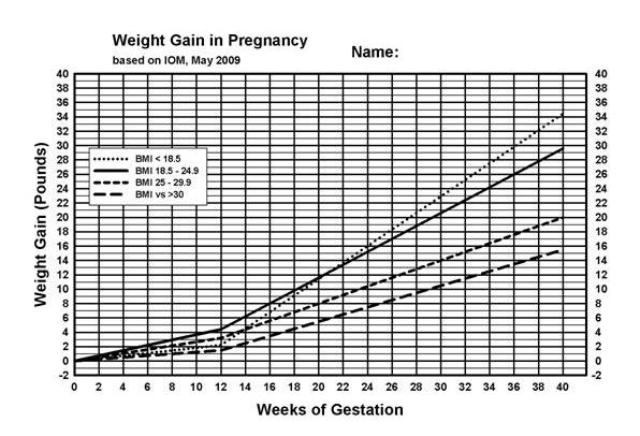It seems that no matter what the issue, when it comes to pregnancy, there are two sides to every coin.
Some women try to gain as little weight as possible while others encourage the pounds; some women involve the entire family and friends in the birthing process while others prefer to undergo childbirth solo; some women swear off exercise while others insist on running the Chicago Marathon two hours before they give birth (yes, that really happened in 2011).
There are so many choices that women have when it comes to pregnancy, but for the female runner, there are a few dos and don’ts that can make this time of life as safe and comfortable as possible.
Is it safe and healthy to run during pregnancy?
Exercise during pregnancy is a hot topic among the active moms of today’s generation. Thanks to years of research on the topic, and ground breaking women who proved outdated science incorrect, we now know that exercise, when done correctly, is not only permissible but can enhance one’s pregnancy.
My favorite example of a pregnancy pioneer is Larisa Latynina, a nine-time Gold Medal Olympic Gymnast in the 1950’s who won 5 titles at the 1958 World Championships while she was four months pregnant.
The first thing to think about when considering running during pregnancy is your pre-pregnancy fitness level. The moment you find out that you’re pregnant is not the time to decide to train for your first marathon. However, if you’ve been a runner for a while and would like to continue training during your pregnancy, there are right and wrong ways to do so.
While elite runners like Kara Goucher, Deena Kastor, and Blake Russell have shown that high intensity training up until very close to delivery is possible without negative consequences on either mother or fetus, the American College of Obstetricians and Gynecologists has laid out a list of recommendations for aerobic exercises during pregnancy.
- Aerobic exercise should be completed at 65%-85% of your maximum heart rate. 33% of women who trained above 90% of their maximum heart rate on a treadmill test shows symptoms of a brief dip in fetal heart rate as well as a change in umbilical blood flow, returning to normal in approximately 2.5 minutes according to a study by Dr. Linda Szymanski ad Dr. Andrew Satin at Johns Hopkins University in Baltimore.
- Hydration status and body temperature should be monitored during and after exercise. Your basal temperature is naturally about 1 degree higher than normal during pregnancy and overheating during exercise is dangerous to both mother and fetus.
- Exercise should be stopped for shortness of breath, headache, chest pain or contractions as these symptoms could signify exhaustion, premature labor or labor.
- Any exercise with potential for abdominal trauma should be avoided for obvious reasons. Running is fine, practicing roundhouse stomach kicks at a karate class is not.
- A good rule of thumb is to not exercise to the point of exhaustion.
There are, however, certain factors that should keep a pregnant woman from running altogether, such as:
- Restrictive lung disease
- Pregnancy-induced hypertension
- Heart disease
- Ruptured membranes
- Premature labor
- Persistent second or third trimester bleeding
And of course, as always, check with your doctor before beginning an exercise routine or maintaining an exercise routine while pregnant.
Changes in your training and racing
Other than these recommendations on exercise intensity and things to watch out for, some questions the pregnant runner may ask herself are:
What changes can I expect in my training as my pregnancy progresses?
How should I expect my racing to change as a pregnant runner?
How should I adjust my running mentality into the “training for two” focus?
While it is still absolutely possible to train and race well in the beginning stages of pregnancy and even set a personal best or two during this time, the expectant runner should be aware of a performance drop off after the first trimester of pregnancy and a steady decline in athletic performance thereafter.
There are several reasons for this. The heart has to beat harder to deliver oxygen to both mother and child, your center of gravity shifts as the baby grows, ligaments in the pelvic region loosen to prepare for childbirth and the most obvious reason, of course, the natural weight gain that accompanies pregnancy. Below is a chart revealing typical weight gain during a pregnancy:

In this time, the pregnant runner must not expect to be racing and training at the same speeds as she has during pre-pregnancy. While it is still OK to run at the same perceived effort as before, the race times and even easy run times reflected will likely become increasingly slower as the pregnancy progresses, and naturally so.
What the pregnant runner should not do is overexert the body in order to try and maintain the same speed and risk exhaustion. For example, if you’ve run a 5k in 21 minutes before becoming pregnant or in the early stages of pregnancy, understand that three or four months later you may put forth the same effort it took to run 21 minutes, but end up with a time of 23-24 minutes instead. And, of course, every pregnancy is different and will reflect a different rate of athletic decline throughout.
You may also be wondering: “how will running during pregnancy affect the health of my baby?” Your baby will likely be healthier if you choose to exercise while pregnant. Running provides benefits to the fetus including:
- Decreased fat mass
- Increased tolerance to stress
- Positive cardiovascular adaptations
Changes in your mentality
“Pregnancy changes everything.” No matter how many times you’ve heard the cliché, you can never be fully prepared for the changes that pregnancy brings until you experience it. One aspect of the changes a pregnant runner must undergo is a shift in focus from being a solo runner, to being a mother-runner-to-be.
For runners who train year round for many races, pregnancy brings with it a decision about whether or not to continue to train and race as planned or readjust your racing schedule to plan for pregnancy-related things. The important thing to remember is that you are now training for the finish line of childbirth as well as any other race finish line you decide to complete.
As your body prepares itself to deliver a baby, both physically and mentally, it is important to stay strong and focused.
If, for instance, you have qualified for the Boston Marathon and really want to run it but it happens to fall on the same day that your baby is due, you must make the decision about whether or not you will be able to reach both finish lines healthy and ready for the recovery process, as well as the logistics surrounding both the marathon and your birth plan.
There is no right answer about how to handle the mental and emotional challenge of having a baby and the best choice for one woman may not reflect the best choice for another. Perhaps running high mileage and continuing to pursue a racing schedule will help one runner cope with the stress of pregnancy by allowing her body to experience changes as a runner and channel her energy into training while another runner may feel it best to put training hard and racing on a back burner as she gives her body a period of rest before the big day.
These are some ways that running can help your mentality during pregnancy:
- Self-esteem boost in keeping fit even as the body begins to put on natural weight.
- Calming the high emotions of anxiety and stress about childbirth that often accompany the third trimester.
- Release of mood-elevating chemicals (in particular dopamine) with pain reducing qualities provide the relaxation of a “runner’s high”.
After the fact
There is no research that suggests that resuming running immediately post partum is detrimental but it’s a good thing to keep realistic expectations in mind as almost certainly, some amount of fitness will have been lost during pregnancy and the body will need to be retrained on some level.
Additionally, most of the physiological changes that occur during pregnancy last between 4 to 6 weeks after birth, but often last longer in women who choose to breastfeed.
Most of all, it is important to enjoy a new and wonderful time of running, and of life!
References
1. Artal R, O’Toole M. Guidelines of the american college of obstetricians and gynecologists for exercise during pregnancy and the postpartum period. Journal of Sports Medicine, 2003; 37:6–12
2. Ueland K, Novy MJ, Medcalfe J. Cardiorespiratory responses to pregnancy and exercise in normal women and patients with heart disease. PubMed, 1973; 115(1):4-10
3. Sady PS, Carpenter MC. Aerobic exercise during pregnancy. Sports Medicine, 1989; 7:357-375
4. May LE, Suminski RR, Langaker MD, Yeh HW, Gustafson KM. Regular Maternal Exercise Dose and Fetal Heart Outcome. Medical Science Sports Exercise, 2012 Jan 3
5. Melzer K, Schutz Y, Boulvain M, Kayser B. Physical activity and pregnancy: cardiovascular adaptations, recommendations and pregnancy outcomes. Sports Med, 2010; 40(6):493-507








One Response
Must read by the expected women.